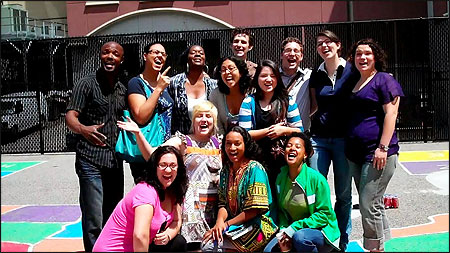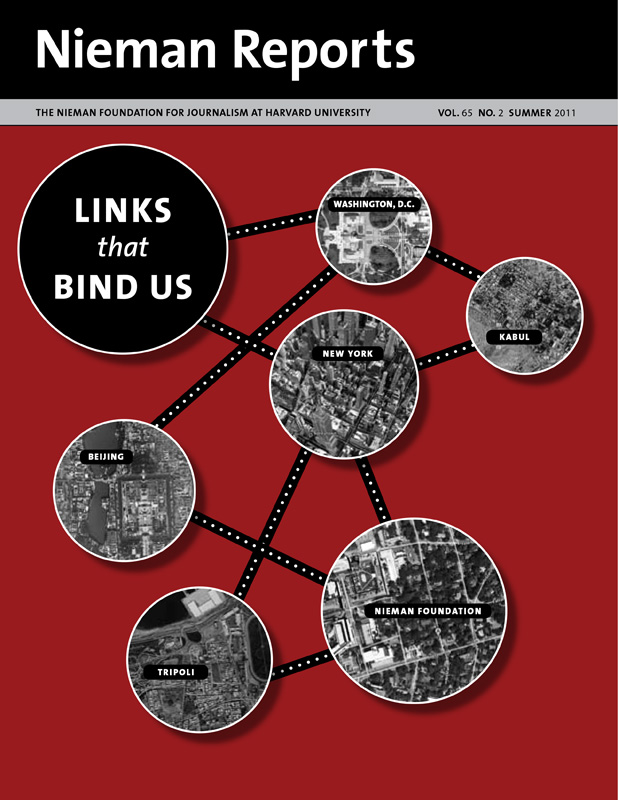
Teachers in the Powerful Voices for Kids program helped students evaluate and create messages in a variety of media. Photo by Renee Hobbs.
RELATED ARTICLES
“Connecting Kids With News in Their Community”
“News Literacy: What Not to Do”
– Renee Hobbs Educators are discovering what works best to build critical thinking and communication skills when it comes to exploring news and information. These learning principles hold their own no matter what the level of education is and are an integral part of Powerful Voices for Kids, a Philadelphia-based program of digital and media literacy education for grade school students.
Start from the learner’s interests. A news event as a teaching tool must be timely, local and relevant. Learners, not the teacher, select the topic to examine, exploring issues that are personally meaningful and relevant.
Connect comprehension and analysis. Learners build reading comprehension and analysis skills through close reading as a way of both understanding what the news is about along with appreciating its form and structure.
Ask critical questions and listen well. Practice asking questions, which is more important than having answers. Respect and value multiple perspectives that arise in the responses. Learners, not just the teacher, ask questions, and as students offer answers, they demonstrate reasoning and present evidence to support their ideas. The teacher is not the exclusive font of knowledge. The teacher listens carefully and helps to create a foundation of knowledge through questioning, searching for new information, developing ideas, and listening with openness, curiosity and respect.
Focus on putting news stories together. Pay careful attention to how news stories are constructed to understand the process and examine how creative and strategic choices of words, images, sounds and graphic design end up shaping a reader’s perception of reality. Appreciate the complex relationship between representation and reality.
Link critical analysis and media composition. Present ideas and information in ways that connect deeply to the task at hand; show by example that there are not any unnecessary, out-of-context, and easily forgettable facts about things that should be known.
Use collaborative multimedia to enable authentic communication. Learners will find ways to share ideas with audiences by using media genres and forms that are appropriately challenging and meaningful.
Engage the class in the community. There is a benefit when classroom activities intersect with the messiness found outside classroom walls. Being in this reality makes learners consider the tensions and contradictions between the ideal and real, between theory and practice.
Instruction in media literacy can create a learning environment in which students can build knowledge about community events relevant to their lives and engage in critical thinking and communication skills in ways that bolster their ability to become active citizens.


